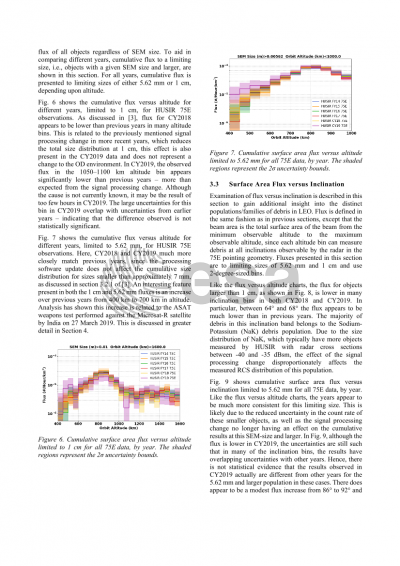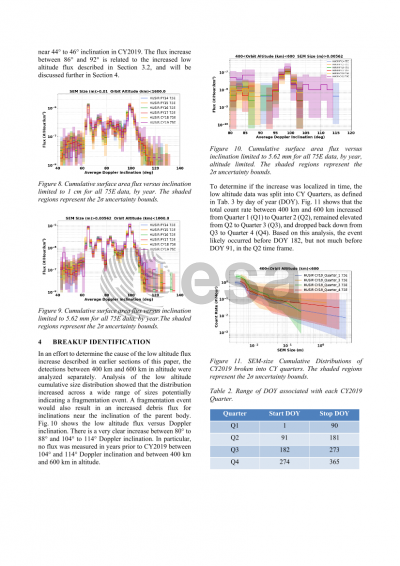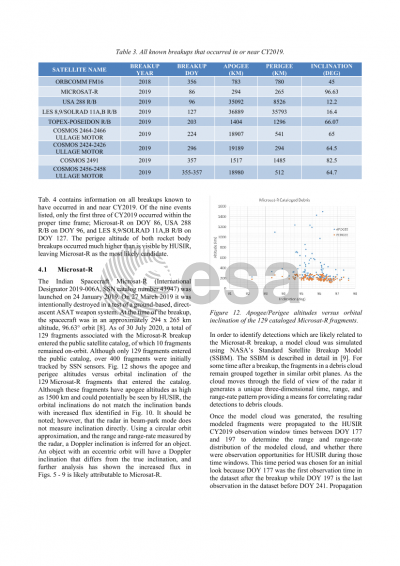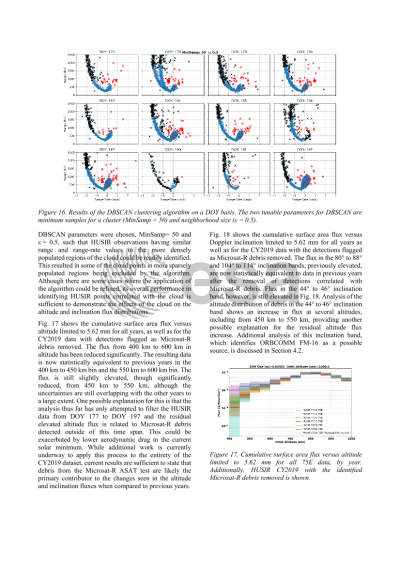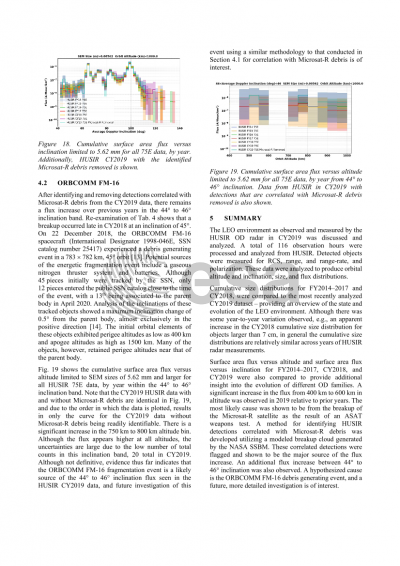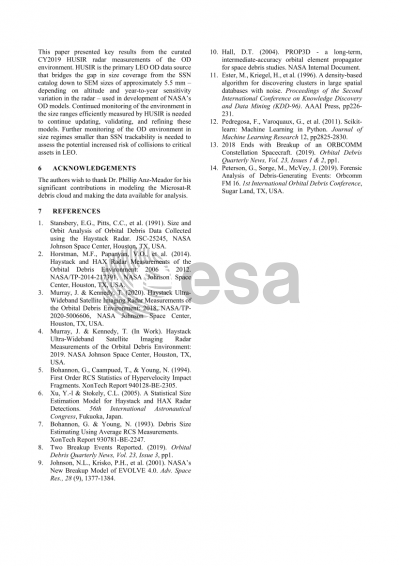Document details
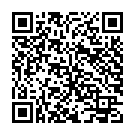
Abstract
The NASA Orbital Debris Program Office (ODPO) relies primarily on ground-based radar measurements to characterize the distribution of small debris, down to approximately 3 mm depending upon altitude and the sensor used, in low Earth orbit (LEO). Since the early 1990’s, the Massachusetts Institute of Technology (MIT) Lincoln Laboratory (LL) has been collecting radar measurements for the NASA ODPO under agreements with the U.S. Department of Defense. The Haystack Ultrawideband Satellite Imaging Radar (HUSIR) is the primary ground-based radar sensor used by the ODPO and provides data on orbital debris down to an approximate size of 5.5 mm below 1000 km altitude using the NASA size estimation model (SEM). Since orbital debris of this size are a significant risk to both human and robotic missions in LEO, the sensitivity of this radar makes it a high-value sensor.
The NASA ODPO radar measurements are conducted on a continual basis for monitoring and enabling modeling of the orbital debris environment over time. HUSIR observations from 2019 are the most recent snapshot of the environment that has been measured and analyzed to date. In recent years, HUSIR measurements indicated relatively stable populations for the orbital debris objects that it is able to detect. In 2019, several interesting events happened on-orbit, including the start of large constellation deployments into LEO, as well as the Indian anti-satellite test with Microsat-R (International Designator 2019-006A, U.S. Strategic Command Space Surveillance Network catalog number 43947). Due to these events, coupled with a general increase in the number of missions and participants launching missions in recent years, continual monitoring is necessary to determine the effects of this increased activity on the orbital debris environment. This paper will explore the results of the 2019 HUSIR radar measurements, including above-average flux measurements at lower LEO altitudes and the evolution of the flux during the time of observations.
Preview



